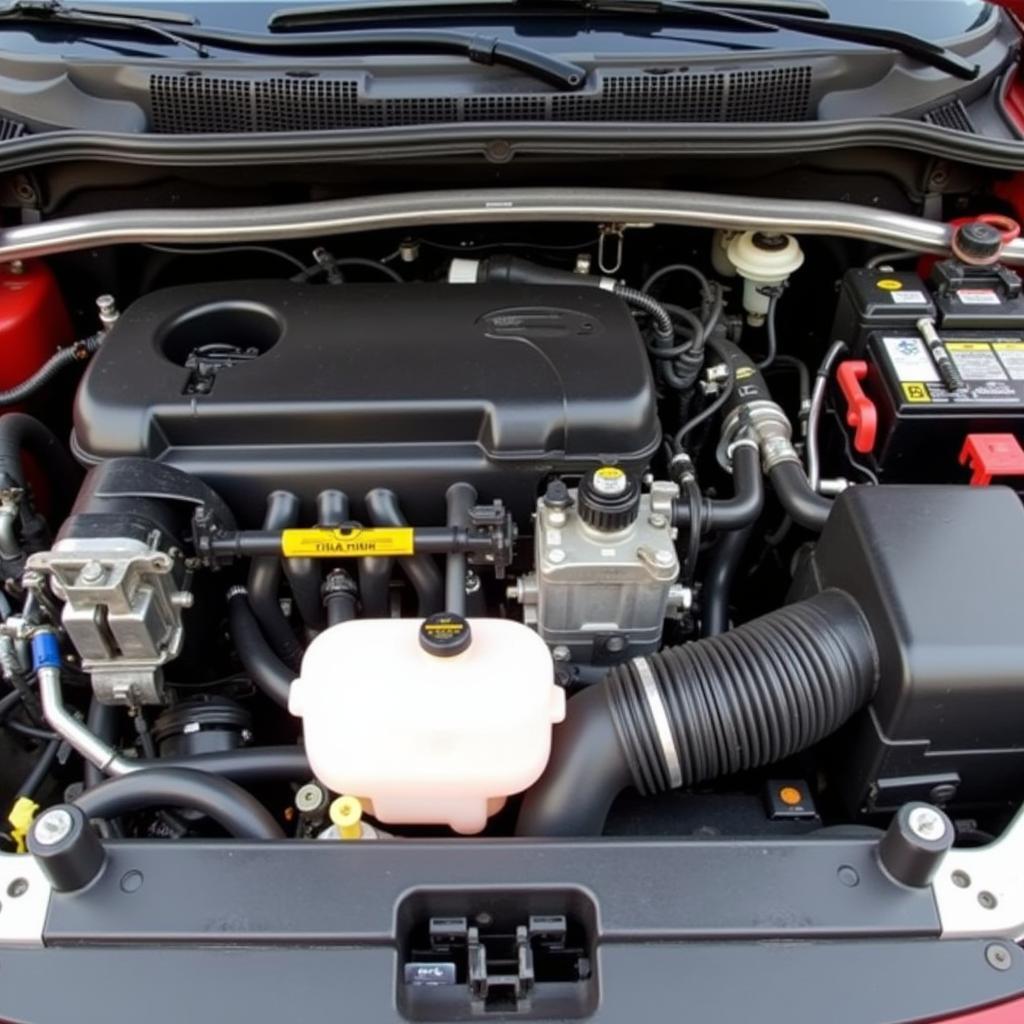Imagine cruising down the road, enjoying the scenery, when suddenly, a yellow light emblazoned with a circle containing an exclamation mark within parentheses illuminates your dashboard. This, my friend, is the dreaded brake booster warning light, a signal that something isn’t quite right with your vehicle’s braking system. While not as immediately alarming as a red brake light, ignoring this warning could lead to costly repairs and, more importantly, compromise your safety on the road.
Understanding the Brake Booster’s Role
Before delving into the potential causes and solutions for a glowing brake booster warning light, let’s take a moment to appreciate the crucial role this often-overlooked component plays in ensuring a smooth and safe driving experience.
In essence, the brake booster amplifies the force you apply to the brake pedal, making it significantly easier to bring your vehicle to a stop. It achieves this by utilizing vacuum pressure, typically sourced from the engine’s intake manifold, to assist in pushing the hydraulic pistons within the master brake cylinder.
Common Causes of a Brake Booster Warning Light
Now that we’ve established the importance of a properly functioning brake booster, let’s explore the most frequent culprits behind that pesky warning light:
1. Vacuum Leak
The most common cause is a leak in the vacuum system, which provides the necessary pressure to power the booster. A hissing sound when you press the brake pedal can indicate a vacuum leak.
How to check:
- Visually inspect the vacuum hose connecting the intake manifold to the brake booster for cracks, holes, or loose connections.
- Listen for hissing sounds around the booster while the engine is idling.
2. Faulty Brake Booster Check Valve
This one-way valve maintains vacuum pressure within the booster. A malfunctioning check valve can lead to a loss of pressure, triggering the warning light.
How to check:
- Inspect the check valve for damage or debris. It’s usually located on the booster itself or along the vacuum hose.
- Try blowing through the valve in both directions. Air should flow freely in one direction and be blocked in the other. If not, the valve needs replacement.
3. Defective Brake Booster
Over time, the diaphragm inside the booster can deteriorate or develop leaks, rendering it ineffective.
How to check:
- With the engine off, pump the brakes several times to deplete any residual vacuum.
- Start the engine while keeping your foot on the brake pedal. If the pedal feels hard and doesn’t sink slightly as the engine starts, the booster is likely faulty.
4. Low Brake Fluid
While not directly related to the booster, low brake fluid level can also trigger the warning light in some vehicles. This is because the master cylinder, responsible for distributing brake fluid, is directly connected to the booster.
How to check:
- Locate the brake fluid reservoir under the hood (refer to your owner’s manual for its exact location).
- Check the fluid level against the minimum and maximum markings on the reservoir. If it’s low, add the appropriate brake fluid type recommended for your vehicle.
5. Electrical Issues
In some cases, a faulty sensor, wiring problem, or malfunctioning brake light switch can also trigger the warning light, even if the booster itself is functioning correctly.
How to check:
- Inspect the wiring harness connected to the brake booster and related components for any loose connections, damage, or corrosion.
- If you suspect an electrical issue, it’s best to consult a qualified mechanic with diagnostic tools to pinpoint the source of the problem.
What to Do When the Brake Booster Warning Light Comes On
While a glowing brake booster warning light might not signal an immediate emergency, it’s crucial not to ignore it.
“Driving with a malfunctioning brake booster can significantly increase your stopping distance, especially at higher speeds,” warns John Smith, a certified automotive engineer with over 20 years of experience in brake system diagnostics. “This delay in braking can be extremely dangerous, particularly in emergency situations.”
Here’s a step-by-step guide on what to do:
- Don’t panic: The light itself doesn’t mean your brakes have failed entirely. However, it does indicate a potential issue that requires attention.
- Assess your surroundings: If possible, safely pull over to the side of the road and turn on your hazard lights.
- Check your brake fluid: As a precaution, check your brake fluid level. If it’s low, carefully add the appropriate type until it reaches the recommended level.
- Contact a mechanic: Unless you’re confident in your mechanical skills and have identified an easy fix like a loose vacuum hose, it’s best to call a qualified mechanic to diagnose and repair the problem. Driving with a compromised brake booster can be dangerous, so it’s always better to err on the side of caution.
Conclusion
The brake booster plays a vital role in ensuring a safe and comfortable driving experience. While a glowing warning light can be concerning, understanding its potential causes and knowing how to respond can save you from headaches and potentially dangerous situations down the road. Remember, regular maintenance and timely attention to warning signs are key to keeping your vehicle running smoothly and, most importantly, ensuring your safety and the safety of others on the road.

